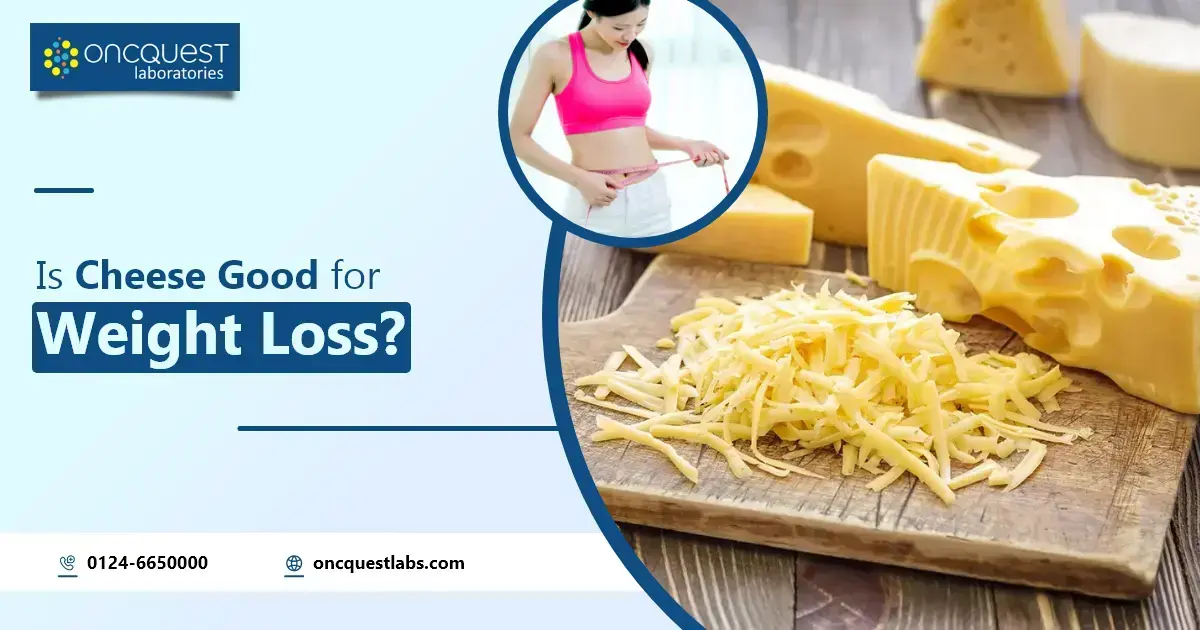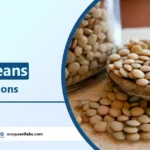Cheese has long been vilified as an indulgent treat best avoided by those looking to shed unwanted pounds. However, recent research challenges this conventional wisdom, suggesting that cheese can actually be a surprising ally in the quest for weight loss. In this comprehensive exploration, we delve into the nutritional composition of cheese, its potential benefits for weight management, and practical strategies for incorporating it into a balanced diet.
Despite its reputation for being calorie-dense and high in fat, cheese boasts an array of nutrients that can support weight loss efforts when consumed in moderation. From its protein content that aids in satiety to its calcium content that may influence metabolism, cheese offers a spectrum of advantages that may contribute to a healthier body composition.
Contents
Nutrition of Cheese
Certainly! Here’s a table outlining the typical nutritional composition of cheese per 100 grams:
| Nutrient | Amount |
| Calories | 300-400 kcal |
| Protein | 20-30 g |
| Fat | 20-30 g |
| Saturated Fat | 12-18 g |
| Carbohydrates | 0-2 g |
| Sugar | 0-2 g |
| Calcium | 700-1000 mg |
| Phosphorus | 300-500 mg |
| Sodium | 400-700 mg |
| Vitamin A | 300-600 IU |
| Vitamin B12 | 1-2 µg |
| Riboflavin (B2) | 0.2-0.4 mg |
| Zinc | 2-3 mg |
| Conjugated Linoleic Acid (CLA) | Varies, but typically found in higher amounts in grass-fed cheese |
Note: Nutritional values may vary depending on the type and processing of cheese.
Cheese is Good For Weight Loss
Cheese, often seen as a dietary villain due to its high fat and calorie content, has garnered attention for its potential role in weight loss. Contrary to popular belief, cheese offers a spectrum of nutrients and compounds that can support weight management efforts when consumed as part of a balanced diet. Here’s a closer look at the nutritional components of cheese and how they may contribute to weight loss:
Protein Content
Cheese is rich in protein, with approximately 20-30 grams per 100 grams. Protein plays a crucial role in promoting satiety, helping individuals feel full and satisfied after meals. By incorporating cheese into meals or snacks, individuals may experience reduced hunger and fewer cravings, ultimately aiding in calorie control and weight loss.
Fat Content
While cheese is indeed high in fat, the type of fat it contains varies depending on the cheese type and processing. Saturated fat, found in varying amounts in cheese, has been associated with increased risk of heart disease when consumed in excess. However, recent research suggests that the impact of saturated fat on health may be more nuanced than previously thought, with some studies indicating that certain types of saturated fats, such as those in cheese, may have neutral or even beneficial effects on cholesterol levels and cardiovascular health.
Calcium
Cheese is a significant source of calcium, providing 700-1000 milligrams per 100 grams. Calcium is not only essential for bone health but may also play a role in regulating metabolism and aiding in weight loss. Some research suggests that adequate calcium intake may promote fat breakdown and inhibit fat absorption, potentially contributing to a lower body fat percentage over time.
Conjugated Linoleic Acid (CLA)
Certain types of cheese, particularly those from grass-fed animals, contain Conjugated Linoleic Acid (CLA). CLA has been studied for its potential effects on weight loss and body composition. While research findings are mixed, some studies suggest that CLA supplementation may modestly reduce body fat mass and increase lean body mass, though further research is needed to confirm these effects and understand the mechanisms involved.
Satiety and Appetite Regulation
The satiating effects of cheese extend beyond its protein content. Cheese also contains peptides that may influence appetite regulation by signaling fullness to the brain. These peptides are released during digestion and can help control food intake by reducing feelings of hunger and increasing satisfaction after meals. By incorporating cheese into meals or snacks, individuals may experience enhanced satiety, leading to reduced calorie consumption throughout the day.
Thermic Effect of Food (TEF)
The thermic effect of food refers to the energy expenditure required for digestion, absorption, and metabolism of nutrients. Protein-rich foods, such as cheese, have a higher thermic effect compared to fats and carbohydrates. This means that the body burns more calories during the digestion of protein, potentially contributing to increased energy expenditure and weight loss. By including cheese in meals, individuals may boost their metabolism and optimize calorie utilization, supporting their weight loss goals.
Gut Microbiota and Metabolic Health
Emerging research suggests that the gut microbiota, the community of microorganisms residing in the gastrointestinal tract, plays a crucial role in metabolism and weight regulation. Cheese contains prebiotic components, such as lactose and certain types of fibers, that can promote the growth of beneficial gut bacteria. A balanced and diverse gut microbiota has been associated with improved metabolic health and may contribute to more effective weight management. Incorporating cheese into the diet can thus have indirect effects on weight loss through its interactions with the gut microbiota.
Psychological Benefits and Adherence to Diet
The inclusion of cheese in a weight loss diet can have psychological benefits that contribute to long-term adherence and success. Cheese adds flavor, texture, and satisfaction to meals, making them more enjoyable and satisfying. This sensory experience can help individuals feel more content with their food choices and less inclined to seek out high-calorie, less nutritious options. By incorporating cheese in moderation, individuals can adhere to their weight loss plan more effectively, leading to sustainable and lasting results.
Cultural and Culinary Considerations
Cheese holds significant cultural and culinary significance in many cuisines around the world. For individuals seeking to lose weight, incorporating cheese allows for the enjoyment of familiar and beloved dishes without feeling deprived or restricted. By embracing the diversity of cheese varieties and culinary traditions, individuals can find creative and flavorful ways to include cheese in their meals while still prioritizing their health and weight loss goals.
Which Cheese is Good for Weight Loss?
When it comes to choosing cheese for weight loss, it’s essential to consider factors such as calorie density, fat content, and overall nutritional profile. Here are some types of cheese that are generally considered more weight loss-friendly:
- Low-Fat or Reduced-Fat Cheese: Opting for cheeses labeled as low-fat or reduced-fat can significantly reduce calorie and fat intake while still providing the flavor and satisfaction of cheese. Examples include:
- Low-fat cottage cheese
- Reduced-fat cheddar cheese
- Part-skim mozzarella cheese
- Fresh Cheeses: Fresh cheeses typically have lower fat content compared to aged or hard cheeses. They also tend to be lower in calories and sodium. Examples include:
- Ricotta cheese
- Fresh goat cheese (chevre)
- Feta cheese (in moderation due to its saltiness)
- Light Cheese Spreads: Light cheese spreads or wedges often have reduced fat and calorie content compared to traditional cheese spreads. They can be spread on crackers or used as a topping for vegetables. Examples include:
- Light cream cheese
- Light Laughing Cow cheese wedges
- Parmesan and Other Aged Cheeses: While aged cheeses like Parmesan are higher in fat, their strong flavor means that you can use less without sacrificing taste. Grating a small amount of Parmesan over dishes can add a burst of flavor without adding excessive calories. Other aged cheeses to consider include:
- Asiago cheese
- Romano cheese
- Plant-Based Cheese Alternatives: For individuals who are lactose intolerant or following a vegan diet, plant-based cheese alternatives can be a suitable option. Look for varieties made from ingredients like nuts, seeds, or tofu. While they may vary in nutritional content, many plant-based cheeses are lower in calories and saturated fat compared to dairy cheese.
- Portion-Controlled Packs: Some companies offer portion-controlled packs of cheese, which can help prevent overeating. These packs often contain individually wrapped cheese slices or cubes, making them convenient for on-the-go snacking or portioning out servings.
When incorporating cheese into your weight loss plan, it’s essential to practice moderation and pay attention to portion sizes. Even lower-fat options can contribute to calorie intake if consumed in large quantities. Pair cheese with other nutrient-dense foods like fruits, vegetables, and whole grains to create balanced meals that support your weight loss goals.
Practical Strategies for Incorporating Cheese into a Weight Loss Plan
Incorporating cheese into a weight loss plan requires mindfulness and balance. Here are some practical strategies to enjoy cheese while supporting your weight loss goals:
- Choose Wisely: Opt for lower-fat or reduced-fat cheese varieties to reduce calorie and fat intake. Look for labels indicating “low-fat,” “reduced-fat,” or “part-skim” options. Fresh cheeses like cottage cheese or ricotta are also excellent choices due to their lower fat content.
- Mind Your Portions: Cheese can be calorie-dense, so be mindful of portion sizes. Aim for small servings, such as one ounce or about the size of a pair of dice, to control calorie intake. Using measuring cups or a food scale can help you accurately portion out cheese.
- Pair with High-Fiber Foods: Pair cheese with high-fiber foods like fruits, vegetables, or whole grains to create balanced meals and snacks. Fiber-rich foods can help promote feelings of fullness and satisfaction, reducing the temptation to overindulge in cheese.
- Incorporate into Balanced Meals: Include cheese as part of a balanced meal that includes lean protein, healthy fats, and plenty of vegetables. For example, add a sprinkle of grated Parmesan cheese to a salad, or incorporate reduced-fat cheese into omelets or sandwiches for added flavor and protein.
- Use as a Flavor Enhancer: Use cheese as a flavor enhancer rather than the main ingredient. A little cheese can go a long way in adding richness and depth of flavor to dishes without adding excessive calories. Experiment with different types of cheese to find ones that complement your favorite recipes.
- Opt for Stronger Flavors: Choose cheeses with strong flavors, such as aged varieties like Parmesan or blue cheese. Strongly flavored cheeses allow you to use less while still enjoying the taste, helping you control calorie intake.
- Plan Ahead for Snacks: Prepare portion-controlled cheese snacks ahead of time to have on hand when hunger strikes. Portion out single servings of cheese into small containers or snack bags for convenient, grab-and-go options.
- Be Mindful of Accompaniments: Pay attention to what you’re pairing cheese with. Opt for whole-grain crackers, sliced vegetables, or fruit slices as accompaniments rather than high-calorie options like chips or bread.
- Enjoy Moderately and Mindfully: Finally, enjoy cheese in moderation and savor each bite mindfully. Take the time to appreciate the flavor and texture of the cheese, and listen to your body’s hunger and fullness cues.
By following these practical strategies, you can incorporate cheese into your weight loss plan while still enjoying its delicious taste and nutritional benefits. Remember that moderation and balance are key to successful and sustainable weight loss.
Conclusion
In conclusion, cheese can indeed be a part of a weight loss plan when approached mindfully and in moderation. Despite its reputation for being calorie-dense and high in fat, cheese offers valuable nutrients such as protein, calcium, and certain fatty acids that can support weight loss efforts. By choosing lower-fat varieties, controlling portion sizes, and incorporating cheese into balanced meals and snacks, individuals can enjoy its flavor and texture while still making progress towards their weight loss goals. It’s essential to be mindful of overall calorie intake and to pair cheese with other nutrient-dense foods to create satisfying and nourishing meals. With careful planning and moderation, cheese can be a delicious and satisfying addition to a healthy lifestyle.
FAQ
Is cheese fattening?
While cheese is higher in fat and calories compared to some other foods, it can still be enjoyed as part of a balanced diet. Opting for lower-fat varieties and controlling portion sizes can help mitigate its calorie and fat content.
How much cheese can I eat on a weight loss diet?
Portion control is key when incorporating cheese into a weight loss diet. Aim for small servings, such as one ounce or about the size of a pair of dice, and be mindful of overall calorie intake.
What are the best types of cheese for weight loss?
Lower-fat or reduced-fat cheeses, fresh cheeses, and strongly flavored aged cheeses are generally better options for weight loss. Choose varieties that are lower in fat and calories and pair them with high-fiber foods for balanced meals and snacks.
Can I eat cheese every day while trying to lose weight?
While cheese can be included in a weight loss diet, it’s essential to practice moderation and balance. Enjoying cheese in moderation as part of a varied and nutrient-rich diet can support weight loss goals without hindering progress.





